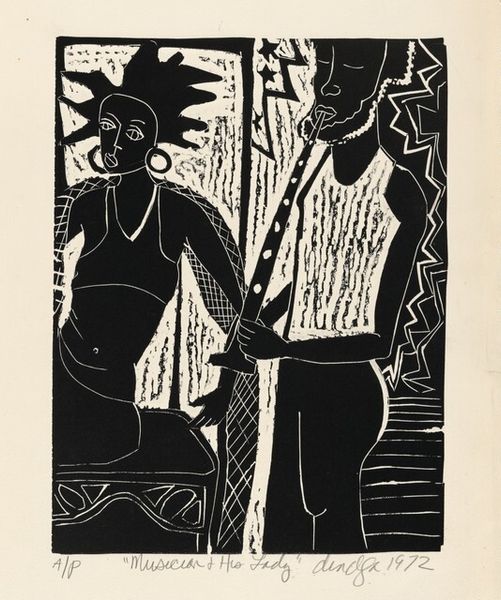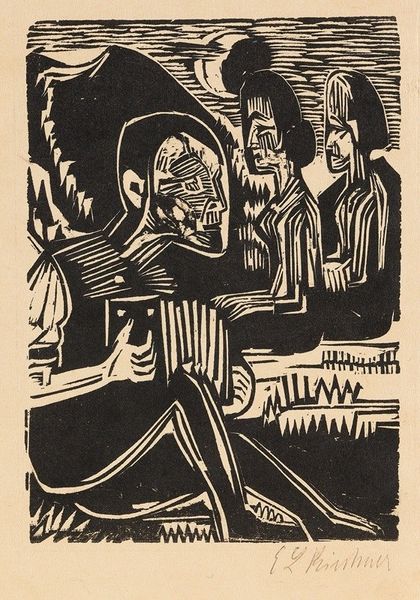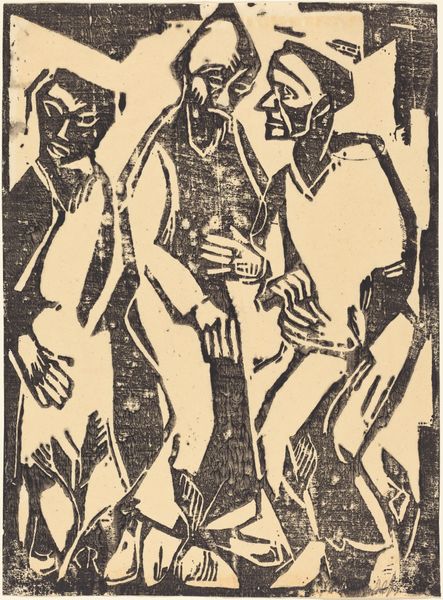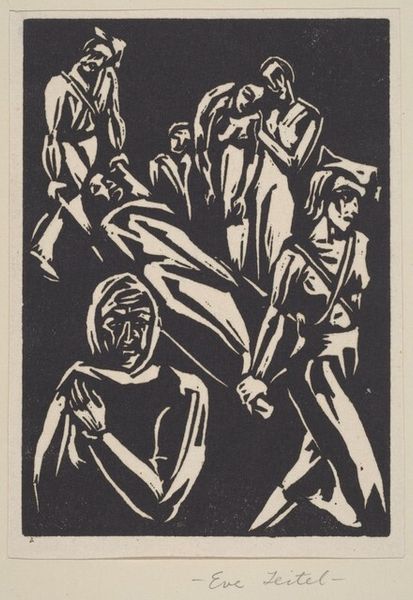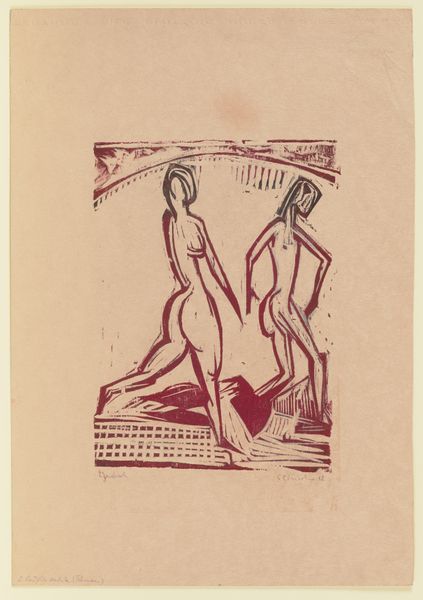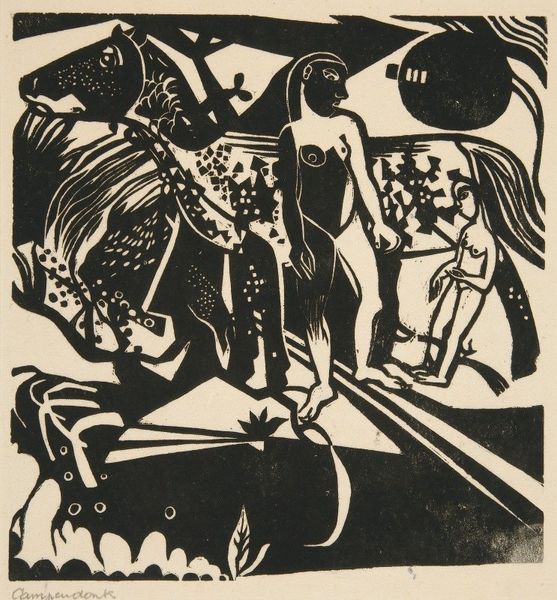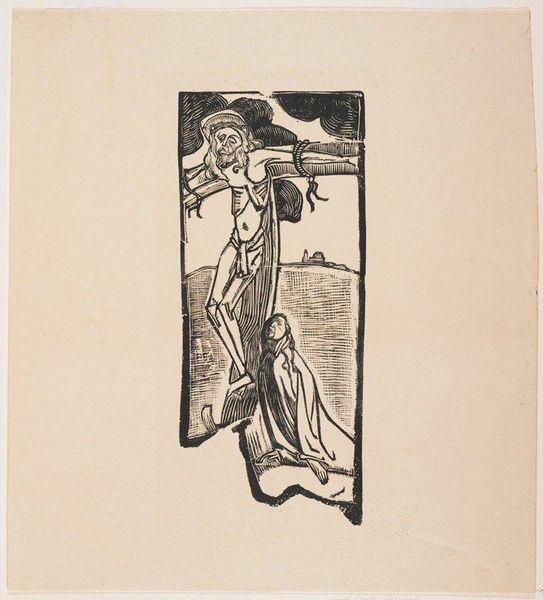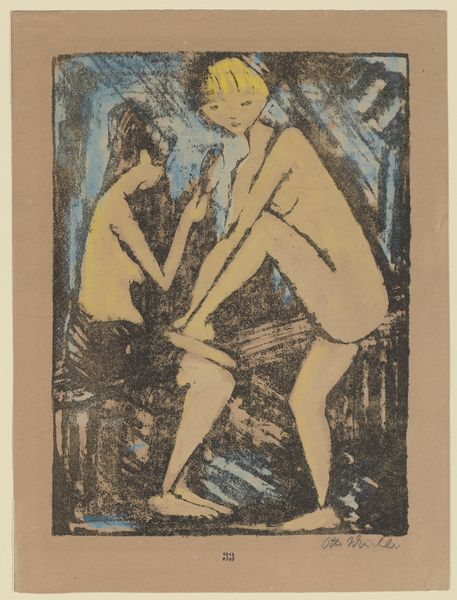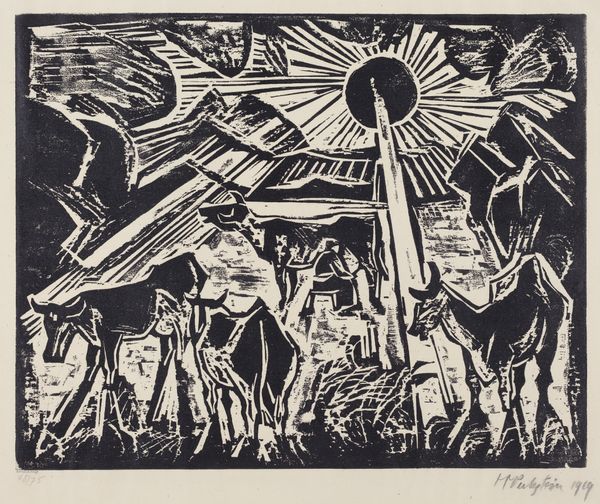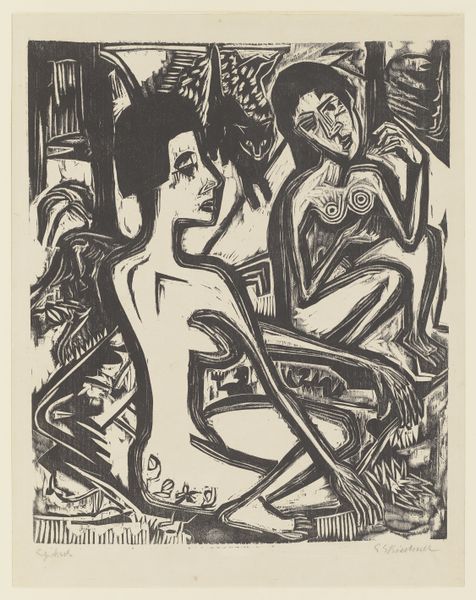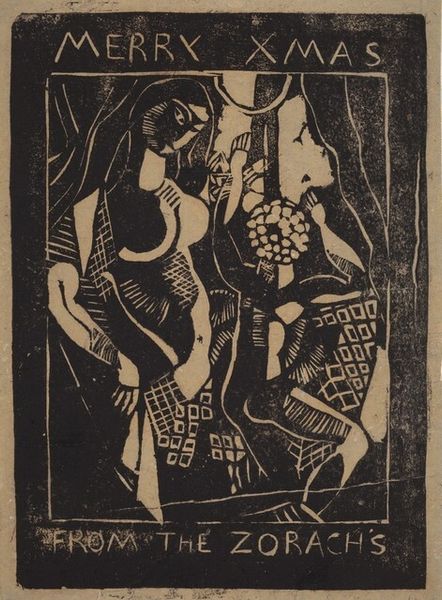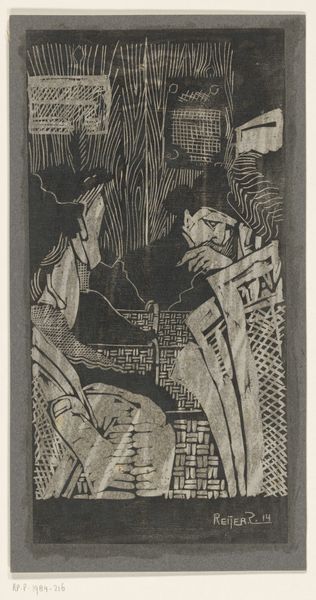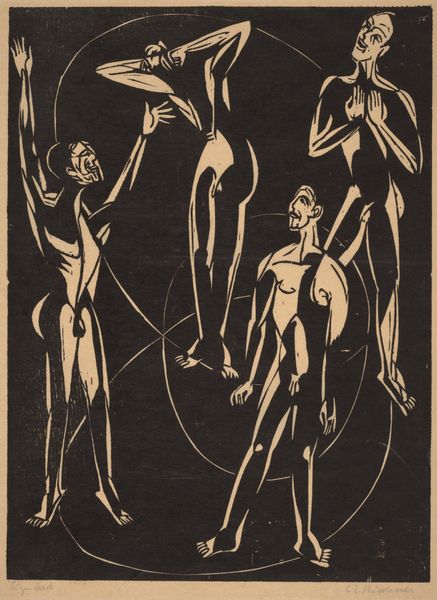
print, woodcut
#
germany
# print
#
caricature
#
figuration
#
expressionism
#
woodcut
#
line
#
nude
Dimensions: 15 7/8 x 12 9/16 in. (40.32 x 31.91 cm) (image)21 × 16 in. (53.34 × 40.64 cm) (sheet)
Copyright: No Copyright - United States
Editor: This woodcut, "Conversation," was created by Max Pechstein in 1920 and is currently housed at the Minneapolis Institute of Art. The angular forms and stark contrast give it a very intense, almost confrontational feel. What historical forces do you think shaped its visual style and meaning? Curator: The raw emotion and distorted figures definitely place it within the Expressionist movement, which emerged in the early 20th century. Think about the social climate of Germany at the time – World War I had just ended, leaving a deeply traumatized population grappling with disillusionment and anxiety. How might this historical context be reflected in Pechstein's stark portrayal of the human figure? Editor: I guess the figures’ awkwardness and detachment could be a reflection of that post-war alienation. The simplified forms remind me of some German modernist art I’ve seen. Curator: Precisely. The simplification of forms was a deliberate choice. Expressionist artists often rejected academic naturalism, opting instead for abstraction and distortion to convey inner emotional states. The woodcut medium itself was also significant. Why do you think Expressionists favored woodcuts? Editor: Maybe because of the stark contrast, or the somewhat rough, unrefined quality of the lines you can get with that printing technique? Curator: Exactly! Woodcuts lent themselves to conveying a sense of raw, unfiltered emotion. The medium resonated with the Expressionist desire to break free from traditional artistic conventions and create art that reflected the anxieties and complexities of modern life. How do you think its themes apply today? Editor: Well, thinking about political polarization and social unrest…maybe that raw, unfiltered expression feels relevant again. Curator: Yes. Considering art as a reflection of and reaction to political movements enriches our understanding. Editor: That makes me see how artworks gain extra layers of significance through a museum collection and how people see them through history. Curator: Absolutely. Understanding those layers reveals new dimensions.
Comments
No comments
Be the first to comment and join the conversation on the ultimate creative platform.
